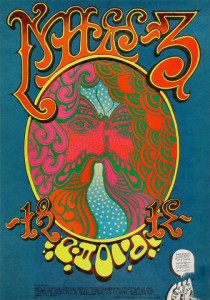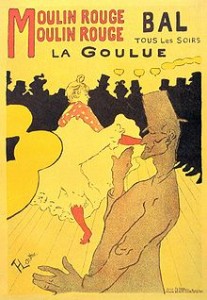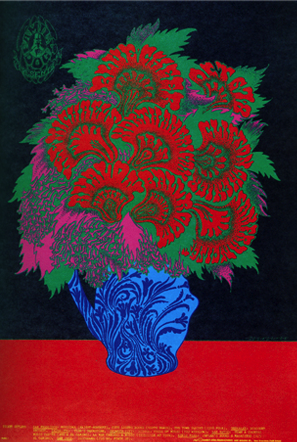Concert Posters Art

Concert posters art is usually defined by the bold and graphical psychedelic rock posters from the 1960s. In the history of rock poster production, these posters were considered just advertising for the musical venues and events. But as the industry grew, the artists became better attuned and articulate with their craft. Personally I think there was high competition between all of the famous rock posters artists. After examining hundreds of these iconic rock posters, it is clear that one poster artist “borrowed” from the other at times. Possibly as an acknowledgement to a concert posters artist technique or style. There was a certain boldness, splash and swirling colorful mystery about these posters where (many times) they were incomprehensible. (See Chuck Berry Concert – Rick Griffin)
History of Concert Posters Art in the 1800’s and Beyond

For over 200 years, posters have been displayed in public places all over the world. They date back to 1870 when lithography and printing in mass production was possible. By the 1890s the style of poster art has spread throughout Europe. Many French artists created poster art including Henri de Toulouse-Lautrec, and Jules Chéret who were key in developing this new art form.
Especially Chéret. He developed new lithographic techniques which added color and innovative typography for more expressive posters. He is also credited to adding sex into advertising. However, Henri de Toulouse-Lautrec’s paintings for posters may be more famous and popular to some. It is interesting to note that cheaply reproduced text and images (posters) by Ceret, Mucha, Toulouse-Lautrec, Will Bradley, Maxfield-Parrish have come to be appreciated as “high art”. (Posters are usually considered low art). Yet lithographic reproductions of Toulouse-Lautrec’s fine art paintings are considered low art. Ironic indeed.

The Flowerpot by Victor Moscoso (pictured right) holds an esteemed position in the history of rock poster design. It is yet another excellent example of “high” concert posters art.
The potent image visualizes the psychedelic experience by adjoining contrasting colors making the still forms appear to move. It also represents the challenges of 1960s counterculture renouncing mainstream culture. Posters of this nature would be some of the first to be admitted to museums. This poster was quite popular. It was reproduced so many times, the rarity has been diminished.
In the 1890s the lithograph posters of Toulouse-Lautrec (and others) were becoming so popular, people were collecting and selling them. This increased their value and rarity. Therefore making them a collectible. Concert posters art from the 1960s would take the same path. From a stapled telephone pole to rare art piece that was hung on a special place in your home or museum.
Follow these links for more fun and pleasure with psychedelic posters:
Vintage Posters for Sale and Collecting
The History of Rock Poster Investing & Collecting Psychedelic Posters